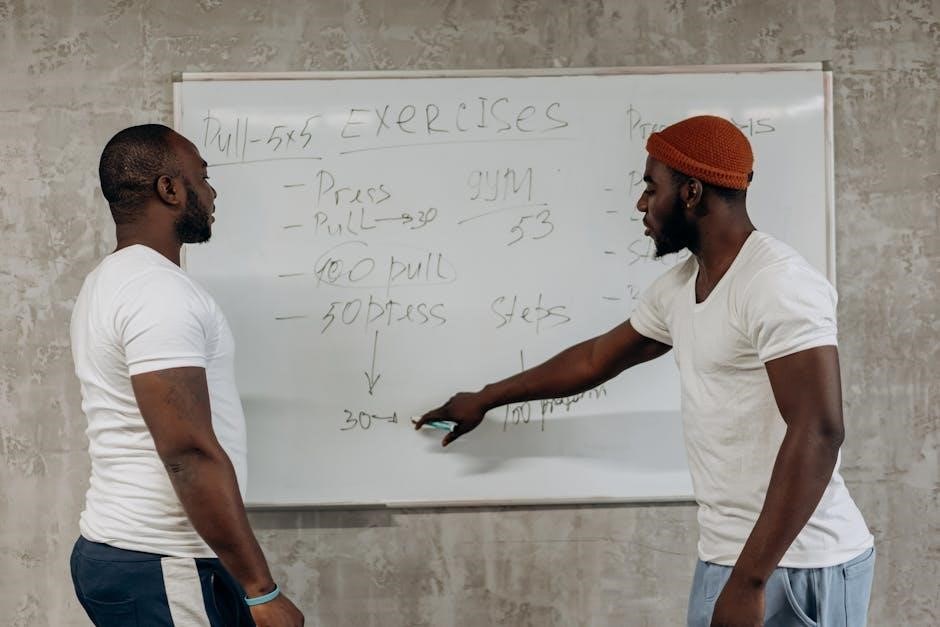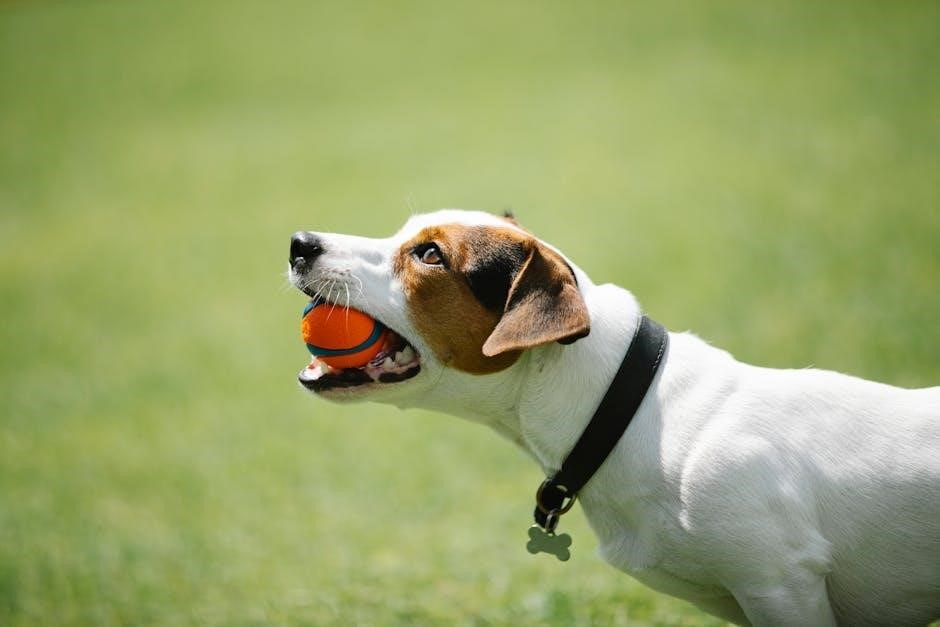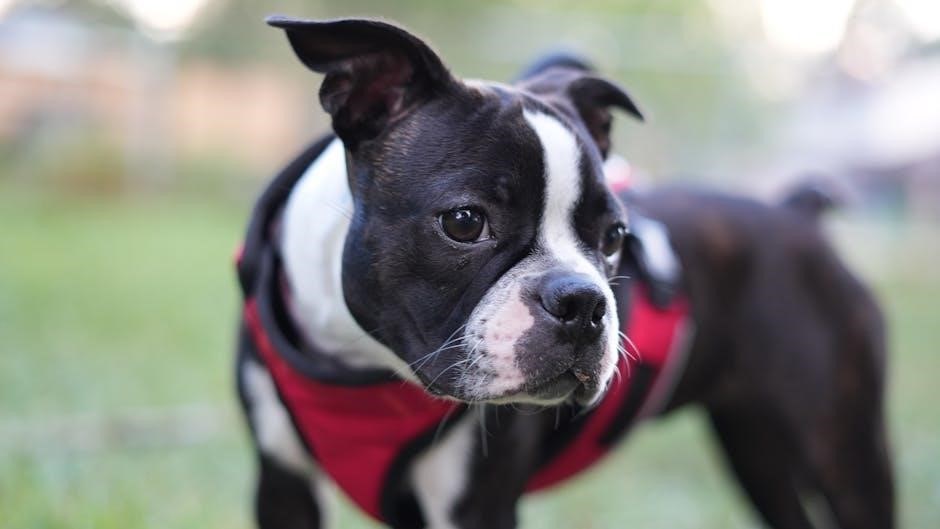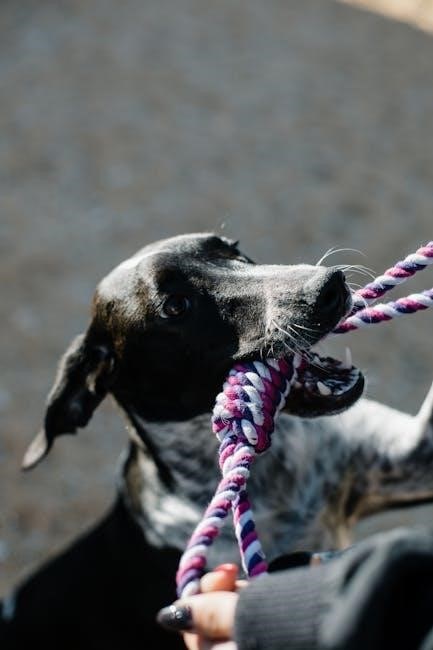Puppy potty training requires a structured schedule and consistent routine to help your puppy learn quickly and effectively. A well-planned routine ensures your puppy understands when it’s time to eat, play, and go potty, making the process smoother for both you and your pet.
Understanding the Importance of a Schedule
A consistent schedule is the cornerstone of successful puppy potty training. It helps puppies learn when it’s time to eat, play, and go potty, reducing accidents and speeding up the learning process. A well-structured routine ensures your puppy can hold their bladder and bowels until it’s time to go outside. By aligning potty breaks with feeding times, naps, and play, you create a predictable pattern that helps your puppy understand the rules. This consistency not only aids in potty training but also lays the foundation for other areas of puppy development.
Key Principles of Successful Potty Training
Successful puppy potty training relies on consistency, positive reinforcement, and supervision. Establishing a routine helps puppies associate specific times with potty breaks. Positive reinforcement, such as praise or treats, encourages good behavior. Supervision is crucial to catch accidents early and redirect your puppy. Using tools like crates or potty pads can aid in training by limiting accidents and providing designated areas. Timing is also key, as puppies can only hold their bladder for short periods. Adjusting the routine as your puppy grows ensures long-term success. Patience and customization to your puppy’s needs are essential for effective training.

Creating a Puppy Potty Training Schedule
A puppy potty training schedule ensures consistency and helps puppies learn when it’s time to go outside. Regular feeding, naps, and potty breaks create a routine that reduces accidents and speeds up the learning process. Supervision and customization based on your puppy’s age and needs are key to success. A well-planned schedule helps your puppy thrive and makes training easier for you.
Step 1: Determine Your Puppy’s Needs
Understanding your puppy’s specific needs is the first step in creating an effective potty training schedule. Factors such as age, size, breed, and individual behavior play a role in determining how often your puppy needs to go outside. Puppies typically need potty breaks every 1-2 hours, but this can vary based on their development; Observing your puppy’s habits and rhythms helps identify patterns, ensuring you can anticipate when they need to eliminate. This step lays the foundation for a customized routine that aligns with your puppy’s unique requirements, making training more efficient and reducing accidents.
Step 2: Set Up a Feeding and Napping Schedule
Establishing a consistent feeding and napping schedule is crucial for successful potty training. Feeding your puppy at set times helps regulate their digestion and elimination patterns, making it easier to predict when they need to go outside. Similarly, scheduling naps prevents overexertion, which can lead to accidents. A structured routine ensures your puppy’s needs are met, reducing the likelihood of mishaps. Supervise your puppy during active periods and take them to the designated potty area immediately after meals and naps for optimal results.
Step 3: Assign Specific Times for Potty Breaks
Consistency is key when assigning specific times for potty breaks. Take your puppy outside immediately after meals, naps, and playtime, as these activities often trigger the need to eliminate. For young puppies, plan potty breaks every 1-2 hours, or more frequently based on their age and bladder control. Stick to a routine, such as taking your puppy out at 7:00 A.M., 8:00 A.M., 12:00 P.M., 3:00 P.M., 6:00 P.M., and 9:00 P.M. Adjust the schedule as your puppy grows and becomes more reliable with potty training.

Sample Puppy Potty Training Schedule
A sample schedule provides a clear structure for potty training, including specific times for potty breaks, feeding, and play. Typical times include 7:00 A.M., 8:00 A.M., 12:00 P.M., 3:00 P.M., 6:00 P.M., and 9:00 P.M.
7:00 A.M. to 7:10 A.M. ‒ Morning Potty Break
Start your puppy’s day with a consistent morning potty break immediately after waking up. This helps establish a routine and prevents accidents. Take your puppy to the designated potty area and encourage them to go. Positive reinforcement, such as praise or a treat, is key when they successfully go potty. This step sets the tone for the rest of the day and helps your puppy learn to associate specific times with potty breaks. Consistency is crucial during this period to ensure your puppy understands the schedule and adheres to it. Adjust as needed based on your puppy’s age and breed.
8:00 A.M. ‒ Post-Breakup Potty Session
The 8:00 A.M. potty session is crucial after your puppy’s morning activity or feeding. Take your puppy to the designated potty area to prevent accidents. Use a specific command like “go potty” to help your puppy associate the action. Praise and reward your puppy with treats or affection when they succeed. This consistent routine reinforces good habits and helps your puppy learn bladder control. Adjust the timing based on your puppy’s age and schedule to ensure effectiveness. Regular breaks like this are essential for successful potty training and a stress-free experience for both you and your pet.
12:00 P.M. ⎯ Midday Potty Break
The midday potty break at 12:00 P.M. is a critical part of your puppy’s training schedule. After lunch, take your puppy outside to the designated potty area to prevent accidents; Consistency is key, so ensure this break happens immediately after feeding. Monitor your puppy’s behavior to recognize signs they need to go, such as sniffing or circling. Praise and reward your puppy with a treat or affection when they successfully go potty. If they don’t go, keep them supervised until the next scheduled break to avoid mishaps. This routine helps establish a reliable potty training pattern.
3:00 P.M. ⎯ Afternoon Potty Session
At 3:00 P.M., take your puppy outside for their afternoon potty session. This break is essential after lunch and playtime to prevent accidents. Lead your puppy to the designated potty area and encourage them to go. Consistency is key, so stick to this time. Watch for signs like sniffing or circling, which indicate your puppy needs to go. If they successfully go potty, reward them with a treat or praise. If not, keep them supervised to avoid accidents. This routine helps reinforce good habits and ensures your puppy learns when it’s time to go outside.
6:00 P.M. ‒ Evening Potty Break
At 6:00 P.M., take your puppy outside for their evening potty break, typically after dinner or playtime. This session helps prevent accidents before nighttime. Lead your puppy to the designated area and give a clear command like “go potty.” Watch for signs such as sniffing or circling, which indicate they need to go. If successful, reward with praise or a treat. Keep your puppy supervised afterward to avoid mishaps. Consistency at this time ensures they associate the late afternoon with the need to eliminate, reinforcing good habits and reducing indoor accidents.
9:00 P.M. ‒ Final Nighttime Potty Session
The 9:00 P.M. potty break is crucial for preventing overnight accidents. Take your puppy to the designated area, using a consistent command like “go potty.” Keep the session brief to avoid overstimulation. Afterward, return inside and limit playtime to signal it’s time to wind down. Crate training can help with overnight retention. Praise your puppy if they succeed and avoid treats to prevent disrupting their sleep schedule. This final session reinforces potty training progress and ensures a smooth night for both you and your puppy.
Using Puppy Potty Training Pads
Potty pads are absorbent, easy-to-clean tools ideal for indoor training. Place them in a consistent spot to encourage your puppy to use them reliably. They’re especially useful for small spaces or nighttime training, helping prevent accidents and speeding up the learning process.
Benefits of Potty Training Pads
Potty training pads are a useful tool for indoor potty training, especially in small spaces or during harsh weather. They are absorbent, easy to clean, and provide a clear area for your puppy to eliminate. Pads help prevent accidents by giving your puppy a designated spot to go, reducing messes in unwanted areas. They are ideal for puppies who cannot be taken outside frequently due to age or health. Using pads can also speed up the learning process, making the transition to outdoor potty training smoother and less stressful for both you and your puppy.
How to Effectively Use Potty Pads
To effectively use potty pads, place them in a consistent, easily accessible location indoors. Supervise your puppy to ensure they use the pads correctly. After meals, naps, and playtime, quickly take your puppy to the pads. Use a specific command like “go potty” to help your puppy associate the action. Praise and reward successful uses with treats or praise. Clean the pads regularly to prevent accidents and odors. Gradually transition your puppy to outdoor potty training by moving the pads closer to the door over time.
Crate Training and Potty Training
Crate training is a powerful tool that complements potty training by confining your puppy to a small space, reducing accidents, and teaching bladder control. It helps puppies learn to hold their pee and poop until taken outside, aligning with your schedule. A crate also provides a safe, cozy environment, minimizing destructive behavior. By combining crate training with consistent potty breaks, you can accelerate the house-training process and create a routine that works seamlessly for both you and your puppy.
Crate training is a widely recommended method for helping puppies feel safe and secure while aiding in potty training. A crate serves as a den-like space, reducing anxiety and preventing accidents by giving your puppy a defined area. It helps puppies learn to hold their bladder and bowels, as they naturally avoid soiling their sleeping space. Crate training also minimizes destructive behavior when you’re not supervising. By incorporating crate training into your potty training schedule, you create a routine that promotes consistency, making the house-training process faster and more effective for your puppy.
How Crate Training Aids in Potty Training
Crate training is an invaluable tool in potty training as it helps puppies learn to control their elimination habits. By confining your puppy to a crate when unsupervised, you prevent accidents and teach them to hold their bladder and bowels. This method works because puppies instinctively avoid soiling their sleeping space. Crate training also helps establish a routine, making it easier to anticipate when your puppy needs to go outside. Over time, this consistency reduces the likelihood of accidents and speeds up the potty training process, creating a well-trained and confident puppy.

Monitoring Progress and Adjustments
Tracking your puppy’s potty training progress is essential. Use a potty training chart to record successful breaks and accidents. Adjust schedules based on their learning pace, ensuring consistency and patience for optimal results.
Keeping a Potty Training Record
Maintaining a detailed potty training record helps track your puppy’s progress and identify patterns. Note the time of each potty break, whether your puppy peed, pooped, or had an accident. This data ensures consistency and highlights areas needing adjustment. Use a downloadable PDF template or create your own chart to log daily activities. Consistent tracking allows you to refine the schedule, praise successes, and address challenges calmly. A record also helps you celebrate milestones, reinforcing the effectiveness of your training routine and guiding adjustments for your puppy’s unique needs.
Recognizing Signs of Readiness
Recognizing your puppy’s readiness to go potty is crucial for successful training. Signs include sniffing, circling, or squatting. Puppies often exhibit specific behaviors when they need to eliminate. Pay attention to these cues and promptly take your puppy to the designated area. Consistency in responding to these signs helps your puppy associate the behavior with the action. Over time, your puppy will learn to signal its needs, making training easier. Acknowledging and acting on these signs reduces accidents and reinforces good habits, building trust and confidence in the training process.
Adjusting the Schedule as Needed
As your puppy grows and matures, their needs will change, requiring adjustments to the potty training schedule. Monitor your puppy’s progress and adapt the routine to suit their development. For example, older puppies can wait longer between potty breaks, while younger ones may need more frequent trips. Adjust feeding times to align with potty breaks and gradually increase freedom in the house as reliability improves. Flexibility is key; life changes or unexpected events may necessitate temporary schedule tweaks. Regularly review and update the schedule to ensure it remains effective and tailored to your puppy’s evolving needs.

Common Challenges and Solutions
Accidents and inconsistent schedules are common challenges. Clean thoroughly after accidents to prevent revisiting spots. Stick to routines, supervise closely, and reward progress to maintain consistency and success.
Handling Accidents Without Punishment
When accidents occur, remain calm and avoid punishment, as it can create fear and setbacks. Instead, clean the area thoroughly with a neutral-smelling cleaner to remove lingering scents. Redirect your puppy to the designated potty area immediately. Consistency is key; stick to your schedule and reward good behavior. Accidents are part of the learning process, so patience and positive reinforcement will help your puppy understand the routine. Punishing your puppy can lead to anxiety, making training more challenging. Stay encouraging and focus on progress, not perfection.
Tips for Nighttime Potty Training
For successful nighttime potty training, take your puppy outside right before bedtime and limit water intake a few hours prior. Set an alarm to take your puppy out during the night, such as at 1:00 AM and 4:00 AM, for quick potty breaks. Keep these sessions calm and short to avoid overstimulation. Use a crate or exercise pen to help your puppy learn to hold their bladder. Consistency and patience are crucial, as puppies may not fully master nighttime training until they are older. Stay positive and reward successful outings to reinforce good habits.
Advanced Potty Training Techniques
Teach your puppy to signal the need to go outdoors and gradually increase house freedom. These techniques reinforce training and improve communication, ensuring long-term success.
Teaching Your Puppy to Signal
Teaching your puppy to signal when they need to go outside is an advanced technique that enhances communication. Start by introducing a bell or a specific command like “go potty.” Each time your puppy eliminates, reward them with praise or treats. Consistency is key—use the same command and routine every time. Over time, your puppy will learn to associate the signal with the action. Be patient and encourage your puppy to use the signal independently. This method not only speeds up training but also reduces accidents, giving your puppy more freedom in the house.
Gradually Increasing Freedom in the House
As your puppy becomes more reliable with potty training, you can gradually grant them more freedom indoors. Start by allowing access to one room at a time under close supervision. Use baby gates or exercise pens to control their movement. Only increase freedom when you’re confident in their ability to hold their bladder and bowels. Maintain a consistent schedule and watch for signs they need to go outside, such as sniffing or circling. Freedom should never come at the cost of accidents, so always supervise until full trust is built.
Consistency and patience are key to successful puppy potty training. Download a printable puppy potty training schedule PDF to track progress and refine routines as needed.
Final Tips for Consistency and Patience
Consistency and patience are crucial for successful puppy potty training. Stick to your schedule strictly, and use positive reinforcement when your puppy succeeds. When accidents happen, avoid punishment and instead guide your puppy to the designated area. As your puppy matures, gradually increase their freedom in the house. Remember, every puppy learns at their own pace, so stay patient and celebrate small victories. With time and dedication, your puppy will master potty training, leading to a happier and healthier relationship with your pet.
Downloading a Puppy Potty Training Schedule PDF
A puppy potty training schedule PDF is a valuable resource for organizing your puppys routine. These downloadable templates are often printable and customizable, allowing you to tailor them to your puppys specific needs. Many PDF schedules include sections for tracking feeding times, potty breaks, and progress. They are designed to simplify the training process and help you stay consistent. By downloading a puppy potty training schedule PDF, you can easily reference and adjust your plan, ensuring your puppy learns quickly and effectively. It’s a convenient tool for a stress-free training experience.
